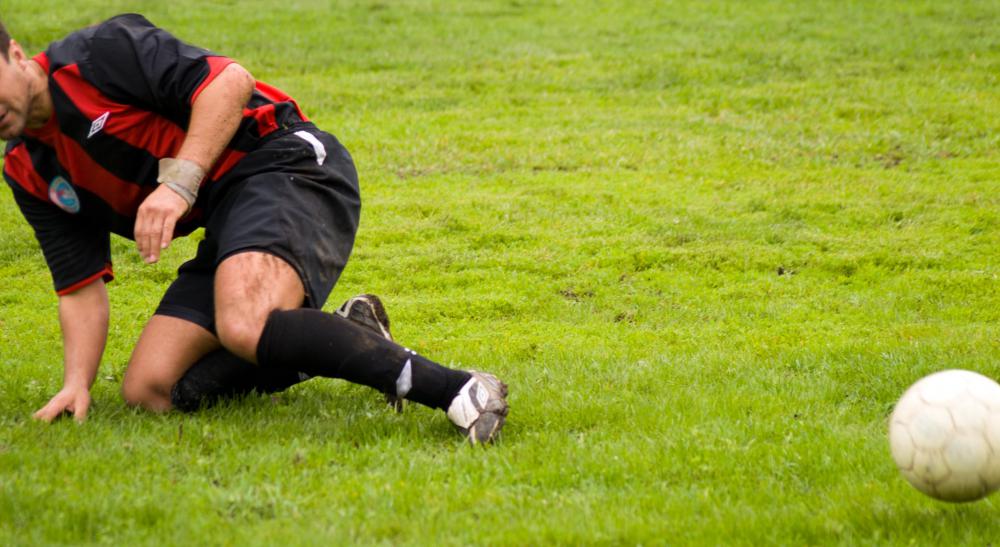At WiseGEEK, we're committed to delivering accurate, trustworthy information. Our expert-authored content is rigorously fact-checked and sourced from credible authorities. Discover how we uphold the highest standards in providing you with reliable knowledge.
What is Myositis Ossificans?
Myositis ossificans is an unusual condition in which bone starts growing inside the muscle. It is also sometimes known as heterotopic ossification. This condition can be identified with the use of x-ray images which will reveal deposits of bone within the muscle and in locations where bone should not be present. The approach to treatment depends on the location of the bone growth, the underlying cause, and factors such as the patient's age.
There are several reasons why someone might develop myositis ossificans. In some people, it is hereditary. People will develop progressive bone growth in their muscles, and over time, the condition can become fatal in some patients. In an unusual genetic condition known as fibrodysplasia ossificans progressiva (FOP), damages to the patient's tissue result in the growth of bone, leading to widespread heterotopic ossification throughout the body over time.

In other cases, people have no known genetic conditions which would lead to myositis ossificans, with the condition appearing as a result of trauma. Individuals with spinal cord injuries and paralysis are at risk, as are people who have had deep muscle injuries which resulted in internal hematomas, such as a kicking injury in a sport such as football. In this case, bone will grow inside the thigh or arm muscles as the muscle heals.

There are some steps which can be taken to reduce the risk of myositis ossificans after an injury. Some medications can be used in patients with spinal injuries, and the routine recommendations for injury care such as icing to prevent inflammation appear to help as well. It is also important to work with an experienced doctor while treating an injury so that signs of complications can be identified early.

When bone growth is identified in an area where it should not be occurring, the doctor determines the cause first. If someone has a genetic condition, the cause may already be apparent, but if someone does not or doesn't have a family history of related disease, some tests may be conducted, along with an extensive patient interview, to learn more about the patient and the situation. Once the cause is identified, treatment options can be discussed.

Sometimes, the extra bone is spontaneously reabsorbed by the body, especially in the case of traumatic myositis ossificans such as that caused by a sports injury. In other instances, it may be severe enough to require surgery to remove the bone. Generally, a wait and see approach will be recommended, with periodic examinations to see whether the condition is progressing or remaining stable.
AS FEATURED ON:
AS FEATURED ON:














Discuss this Article
Post your comments